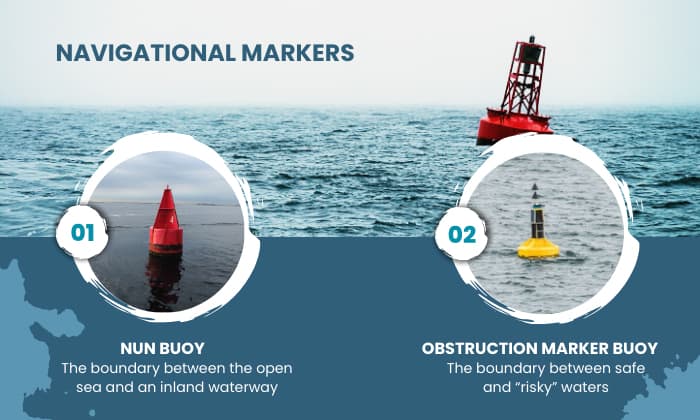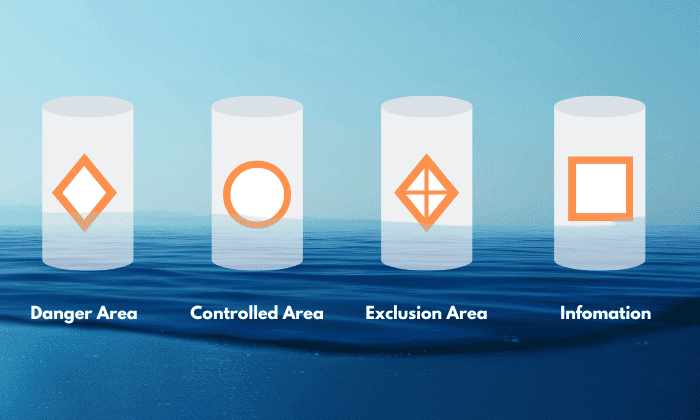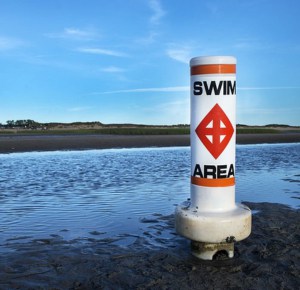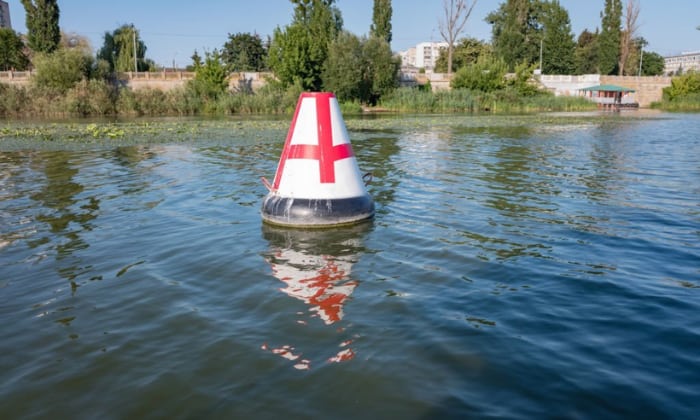Not many boaters (especially greenhorns) recognize that one type of marker is used to warn boaters about a hazard or obstruction in the water. Known as Inland Waters Obstruction Markers, these marker buoys in the water are simple to spot.
While most non-lateral buoys feature highly visible colors (i.e., yellow, orange, or red), an obstruction marker buoy has black and white vertical lines on a barrel-shaped flotation mechanism.
An Inland Waters Obstruction Marker isn’t the only non-lateral navigational marker boaters must learn to initiate safe action in the water. Join us in exploring different safety-oriented buoy types to make your boating adventures hassle-free and safe for everyone else.
Table of Contents
Inland Waters Obstruction Markers
The rules of navigation aren’t different from road regulations. We pilot boats in predetermined sections of inland waterways as we would our cars on highways and streets. The only difference is the waterway “path” is imaginary.
That’s why we have navigational markers – lateral for showing us which “side” of the waterway is safe to navigate and non-lateral for waterways information.
- An example of a lateral marker is a nun buoy. This red cone-shaped buoy marks the boundary between the open sea and an inland waterway. These red buoys always have even numbers and stay on the channel’s right side, heading upstream.
- Inland Waters Obstruction Markers are an example of non-lateral signage. It’s similar to “caution! danger ahead” signs on roads.
This obstruction marker buoy is a white barrel-shaped buoy with black vertical stripes. The IWOM danger marker provides an imaginary boundary between safe and “risky” waters. This hazard marker boating buoy requires boaters to avoid passing between the “aquatic signage” and the shore nearby.
The marker indicates a possible underwater hazard, such as sharp rocks, thick subsurface foliage, debris, and other unseen obstacles. Any of these objects can enter a jet boat’s intake system or snag the propellers of conventional watercraft.
As mentioned, the Inland Waters Obstruction Marker is one of the non-lateral buoy types that boaters must know.
Types of Marker Used to Warn Boaters and Their Meanings
Let’s first differentiate a “caution buoy” from other non-lateral navigational markers. The latter always has a white body and two orange horizontal stripes – one near the top and another near the bottom.
For these non-lateral buoys, you will also see a symbol on a regulatory marker. Four symbols you’ll come across are a square, a circle, an orange diamond and black lettering, as well as a diamond with a cross.
Let’s now look at the types of buoys other than Inland Waters Obstruction Markers with their corresponding meanings, benefits, position on the water, and situational uses.
1. Danger Area Markers
These buoys warn of a rock, submerged wreck, stump, dam, ongoing or abandoned construction, shoal, and other hazards in the water. It’s worth noting that not all underwater hazards will have a buoy to indicate their presence. Hence, vigilance and caution are still necessary.
Danger Area Markers have two orange lines and an orange diamond to indicate a potential hazard to vessel operation like rocks and other submerged objects. Black letterings above the orange diamond show the type of boating hazard.
It’s different from an Inland Waters Obstruction Marker because it clearly identifies the type of “danger” or hazard.” The IWOM buoy doesn’t.
2. Controlled Area Markers
A white marker with an orange circle is a Controlled Area Marker. Like Danger Area Markers, a black text inside the orange circle indicates the type of boating control.
For example, you might see “no wake” printed inside the orange circle. The information requires boaters to go easy on the throttle and maintain idle speed to minimize wake creation. “Ski zone” and “speed limit” are other examples of Controlled Area Marker signs.
These navigational markers are similar to control traffic signs, such as “yield,” “speed limit,” “weight limit,” “one way,” and “HOV lane ahead.” The buoy allows you to proceed through the waterway section, provided you follow the control conditions.
3. Exclusion Area Markers
Some boaters mistake these buoys for Danger Area Markers because they look similar. However, the exclusion area markers also feature a cross inside the diamond.
These buoys mark a swimming area, spillway, dam, and other waterway sections where boats are off-limits. Steering the vessel beyond these markers might injure swimmers and divers or earn stiff penalties from the authorities.
It differs from a Controlled Area Marker in that CAM buoys allow boaters to pass, provided they observe the “control condition”, such as not making any wake. Meanwhile, watercraft operators cannot and mustn’t go beyond the Exclusion Area Marker.
What Color Are Safe Water Markers
Also referred to as a “Mid-channel buoy”, a safe water marker has a white body and large red stripes running down its side. Its presence indicates its surroundings are free of obstructions, and boaters are free to pass on either side of the fairways or mid-channels.
Conclusion
More than one type of marker is used to warn boaters when navigating or passing inland waterways. Inland Waters Obstruction Markers advise operators about the possible presence of underwater obstacles and other conditions that could undermine watercraft operation.
Meanwhile, Danger Area Markers are almost similar to IWOMs, except boaters know precisely the type of “danger” (i.e., rocks).
Controlled and Exclusion Area Markers are nearly identical. The former allows boaters to pass, provided they observe the control conditions. On the other hand, Exclusion Area Markers prohibit any watercraft from going beyond the buoy.

Ten years of enjoying countless trips on boats never made me love them any less! So I am here to put all those experiences into good use for other boaters who want to have a safe and fun trip with their friends and families.







